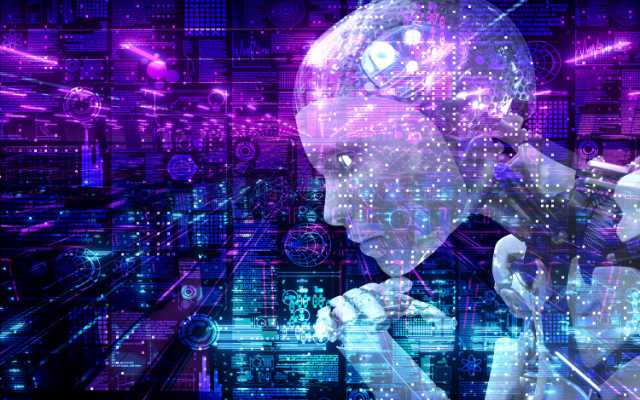Email Us : contact@sprginfotech.com
AI Images in Marketing- AI technology has made it possible for marketers to create high-quality, customized images with ease. However, as with any new technology, there are important considerations to keep in mind when leveraging AI-generated images in marketing. From quality control to legal and ethical concerns, it is crucial to consider these factors before using AI-generated images in your marketing campaigns. This will help ensure that your marketing efforts are effective and that your brand is represented in the best possible light.
What is AI Imagery?
AI imagery refers to the use of artificial intelligence (AI) to generate or manipulate images. This can include creating new images from scratch, as well as editing or enhancing existing images. There are a variety of techniques used in AI imagery, including deep learning, computer vision, and generative models. Some examples of AI imagery include:
- Generative Adversarial Networks (GANs): These are neural networks that are trained to generate new images by learning from a dataset of existing images.
- Style transfer: This technique allows for the transfer of the style of one image onto another image.
- Super-resolution: This is the process of increasing the resolution of an image using AI algorithms.
- Object detection and segmentation: This is the process of using AI algorithms to identify and segment specific objects within an image.
AI imagery is widely used in many fields such as video game, movie and advertising industries to create photorealistic images, animations and videos. It is also used in various industries such as healthcare, retail, and finance for image analysis and image recognition.
Important Factor
When using AI-generated images in marketing, there are several important factors to consider:
- Quality: Ensure that the AI-generated images are of high quality and accurately represent your brand.
- Legal and ethical considerations: Make sure that the images do not infringe on any copyright laws or use any unauthorized images of people.
- Brand consistency: Ensure that the images align with your brand’s aesthetic and messaging.
- Audience: Consider if the images will be well-received by your target audience and if they will effectively communicate your message.
- Performance: Monitor the performance of AI-generated images in your marketing campaigns and adjust accordingly.
- Explainability: Consider how to explain the use of AI-generated images, so that the audience is not mislead or confused.
- Accessibility: Ensure that the images are accessible to users with disabilities and that they comply with web accessibility guidelines.
Pros and Cons of AI Image Software
There are several pros and cons to using AI image software:
Pros:
- High-quality images: AI image software can generate high-quality images with photorealistic details.
- Efficiency: AI image software can automate many tasks, such as image editing and retouching, which can save time and resources.
- Customization: AI image software can be trained to generate images that align with a specific brand aesthetic or style.
- Cost-effective: AI image software can be more cost-effective than hiring professional photographers or designers for image creation.
- Scalability: AI image software can handle large amounts of data, making it suitable for large-scale projects.
Cons:
- Limited creativity: AI image software is only as creative as the data it is trained on, and it may lack the unique perspective and creativity of a human.
- Technical limitations: AI image software can struggle with certain tasks, such as creating images with complex lighting or reflections.
- Ethical concerns: AI image software can raise ethical concerns, such as the use of deepfakes, and the potential for misuse.
- Lack of control: AI image software may generate images that deviate from the intended style or message, resulting in a lack of control over the final product.
- Lack of transparency: AI image software may not always be transparent about how it generates images, which can be a concern for explainability.
It is important to keep these pros and cons in mind when considering using AI image software in your marketing efforts. It can be a powerful tool, but it’s important to use it responsibly and consider its limitations.
- What is CRM (customer relationship management) Strategy
- How to create a marketing plan
- Reasons Why Your Business Absolutely Needs SEO
AI Image Generators
AI image generators are a type of AI software that can create new images from scratch. There are several different types of AI image generators, including:
- Generative Adversarial Networks (GANs): GANs are neural networks that are trained to generate new images by learning from a dataset of existing images.
- Variational Autoencoders (VAEs): VAEs are a type of AI model that can generate new images by learning the underlying probability distribution of a dataset.
- Deep Convolutional Generative Adversarial Networks (DCGANs): DCGANs are a specific type of GAN that use convolutional neural networks to generate new images.
- Autoregressive models (like PixelCNN and PixelRNN) : Autoregressive models are a type of neural network that predict pixels one by one in a left-to-right and top-to-bottom manner
These AI image generators can be trained on a wide variety of image datasets, such as photos of animals, landscapes, or even abstract images. They can be used to generate images for a variety of purposes, including video game and movie industries, advertising, and more. However, it’s important to note that the quality and diversity of the generated images may vary depending on the quality and diversity of the training data, and the complexity of the AI model used.
AI Image Alternatives
AI image alternatives refer to using artificial intelligence (AI) and machine learning (ML) algorithms to create new images or modify existing ones. This can include tasks such as image generation, style transfer, image super-resolution, and image editing. AI image alternatives can be used in a variety of applications, such as video game graphics, film and video special effects, and product design.

